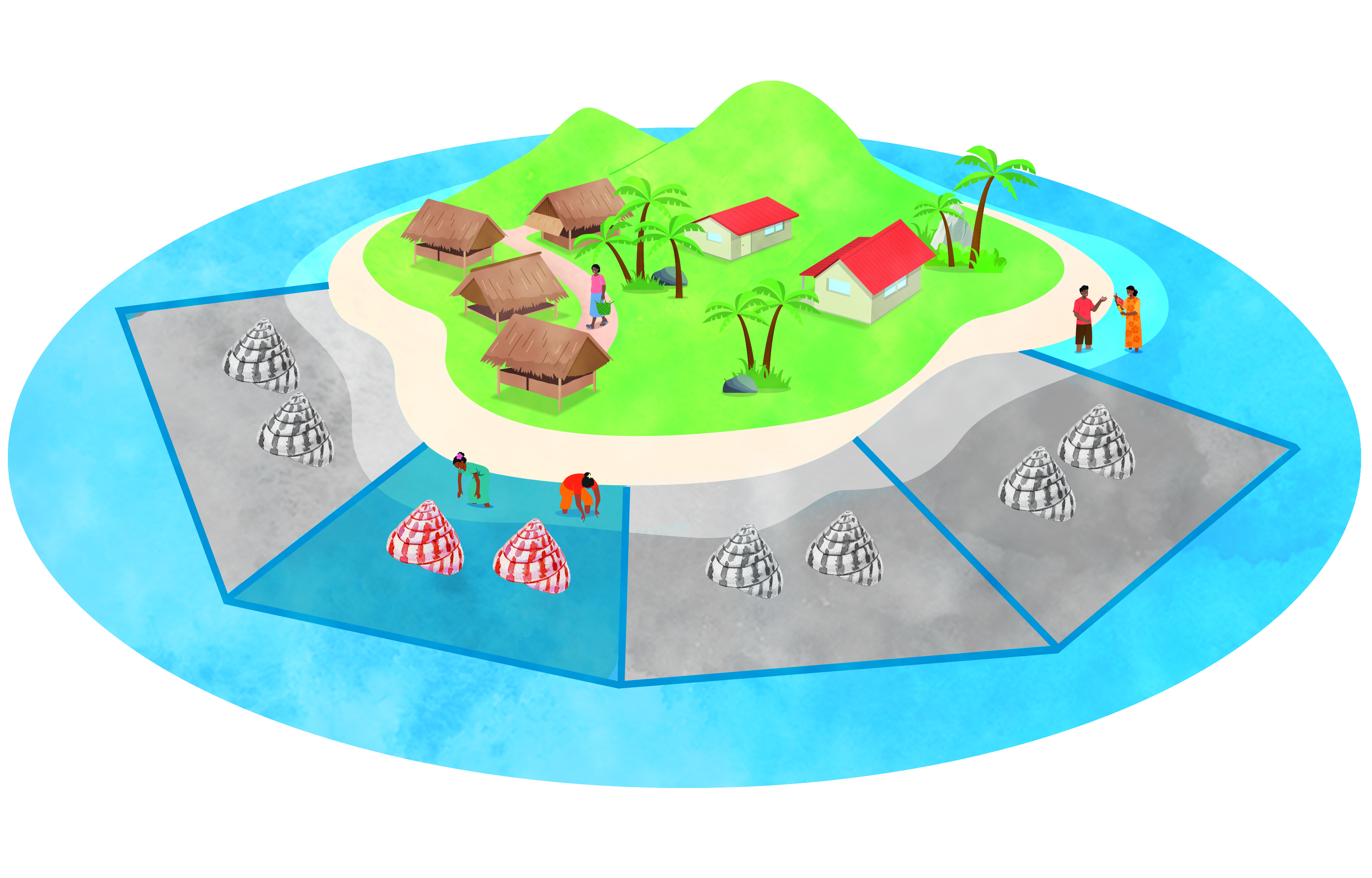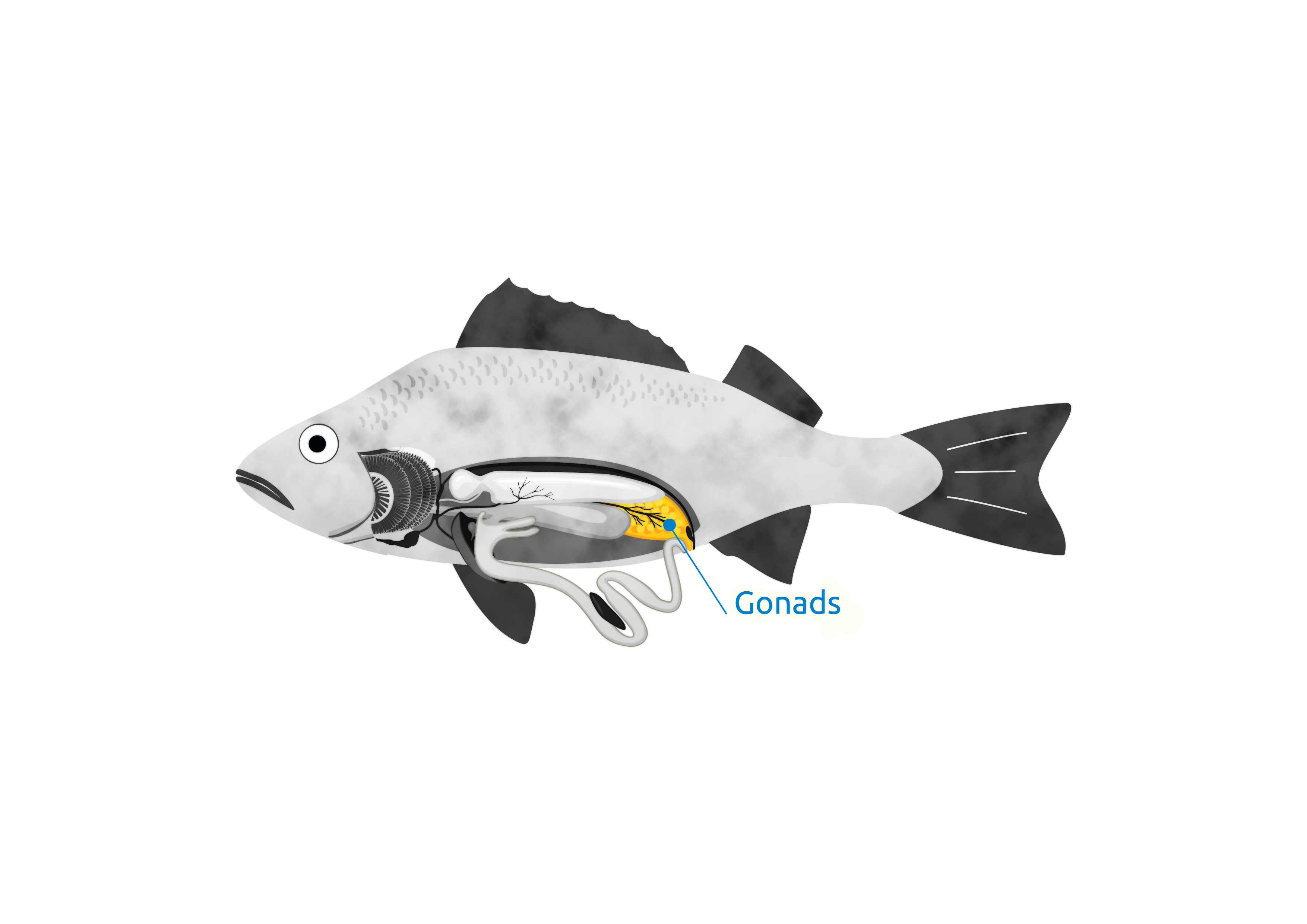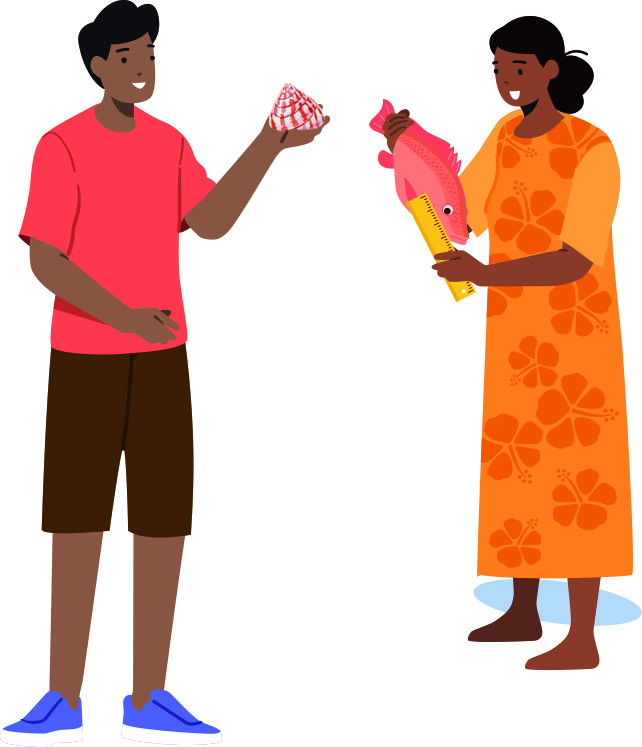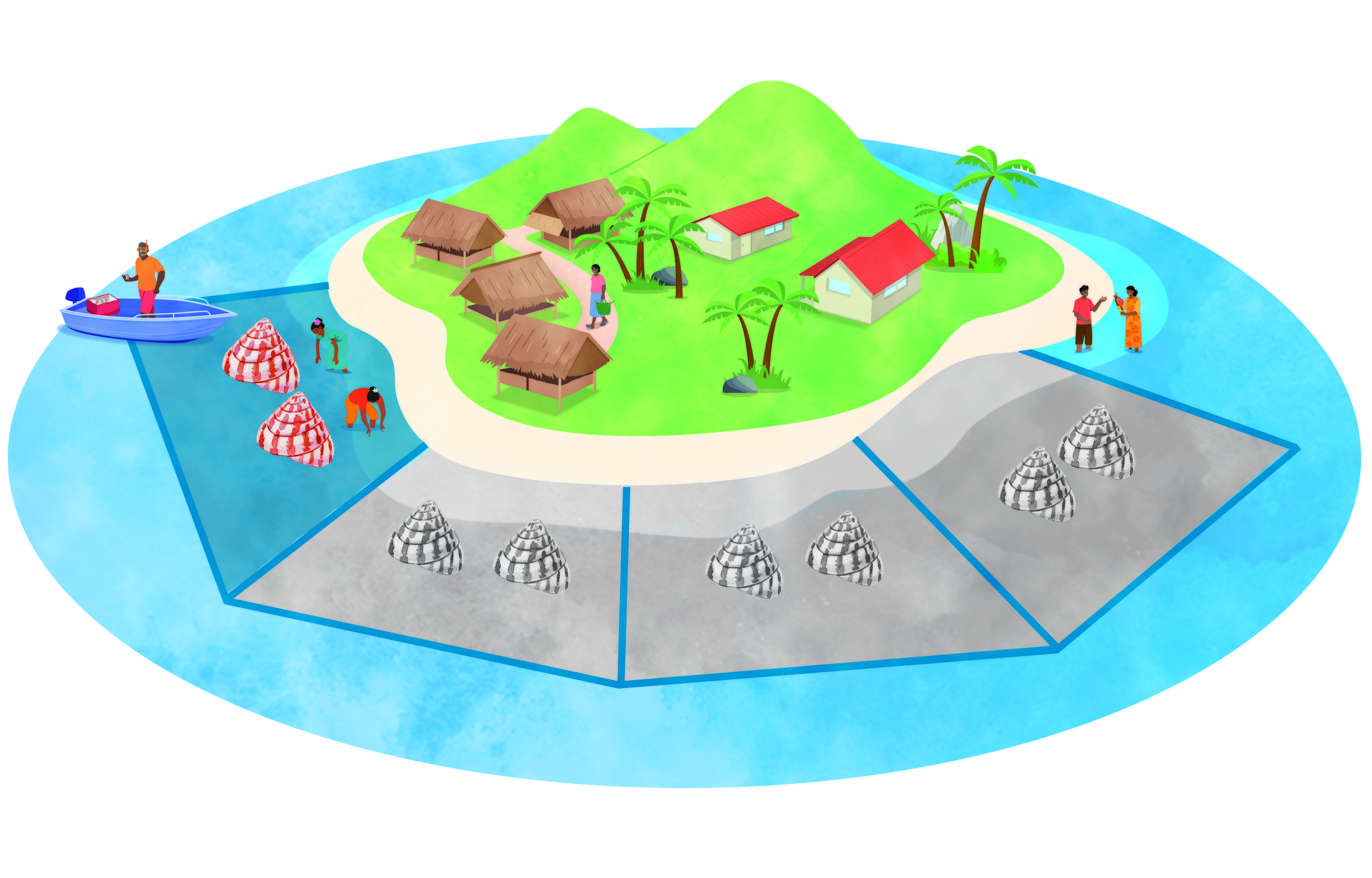What are temporary closures?
Temporary closures are fisheries management tools that involve establishing temporary bans on fishing and harvesting on particular marine resources or on a particular marine environment, or a combination of both, at a given time.
What is the purpose of temporary closures?
Temporary closures are used to protect marine species, especially those about to reproduce; an important use of temporary closures is to allow marine resources the ability to spawn without interference.
What kind of closures, when and where?
-
Spawning season bans to protect key breeding sites and seasons
Many marine resources migrate, often at a particular time of the year, and gather in a well-defined place called a spawning aggregation site. In the figure below, fish gather in a spawning aggregation and the large number of eggs and sperm being released in a relatively small area increases the possibility of the eggs being fertilised.
The locations of spawning aggregation sites for different species of fish are often well known to communities and form a part of traditional and local knowledge. Even though these sites may be some distance from the community, they are important to protect, using temporary closures.
Several species are known to migrate to spawning aggregation sites, including grouper, snapper, emperor, wrasse, parrotfish, surgeonfish and trevally. Fish often form aggregations on each new or full moon during the breeding season. The sites are often at channels in reefs where currents are strong, aiding the transport of fertilised eggs and larvae to distant areas.

-
Temporary closures to avoid ciguatera fish poisoning
Temporary closures can also be imposed during times when some marine resources become toxic for consumption. One such period is when there is a high risk of people contracting ciguatera fish poisoning, which is responsible for major public health problems in the Pacific region. Ciguatera is related to the appearance of very small floating plants (phytoplankton) that periodically go through massive increases in abundance, referred to as blooms.
- A. Toxic phytoplankton is associated with seagrass beds.
- B. Increased nutrients (perhaps released from damaged corals) allow toxic phytoplankton to increase in abundance. Toxins are concentrated in small grazing fish.
- C. Carnivorous fish feed on the small fish and the toxins are concentrated further.
- D. People eat affected fish and suffer from ciguatera poisoning.
The seasonal high risk for ciguatera is usually well known to fishing communities and banning particular species during this time is a practical measure.
-
Rotational harvesting for marine resources that move minimally
For some marine resources, protection from overfishing can be achieved by rotational harvesting in which different fishing areas are closed and opened on a rotational basis to allow populations and habitats to recover. A large marine area can be divided into smaller sub-areas that are in rotation each year. If, for example, there are four small areas, each area would have three years’ protection allowing populations to rebuild and fish to grow. In the figure below, area 1 is open to fishing, while the other three are closed. The following year, area 2 is opened and areas 1, 3 and 4 are closed.
Rotational harvesting is particularly appropriate for marine resources that move minimally, such as some species of reef fish, sea cucumber, sea urchin and mollusc. It may also be less environmentally damaging when areas of fishing grounds are protected and allowed to go through periods of recovery. This can be used on women’ fishing areas for molluscs, for example, in which there are temporary closures on some reef flats or mud flat areas of molluscs, but other areas are open. Then the process rotates, and other areas are closed off temporarily to collection.
Year 1
Year 2

How can we implement temporary closures?
Communities are aware of the best times and places to establish temporary closures to protect spawning marine resources, as well as the seasons in which some fish become toxic. In many countries and territories, communities have traditional control over adjacent areas of coast and sea and can ensure that the fishing bans in their nearby temporary closures are observed. Boundaries and timing of these closures are the responsibility of the community, in wide consultation within the community, and with those that fish within the areas to be temporarily closed, as many people depend on marine resources for food security.
The timing of closing fishing and harvesting in a particular area depends on knowledge of the start of the spawning season. This can be determined by observing the reproductive organs or gonads when community members catch and clean marine resources, shown in the figure below. In males, the gonads are pale and thin; in females, the gonads are usually larger and orange. The appearance of large gonads in female fish is a good indication that they are about to spawn.

What are the benefits, problems and limitations of temporary closures?
The benefit of protecting spawning marine resources, and banning fishing and harvesting at spawning times, is to ensure the production of the next generation of marine resources. Problems can include the fact that the start of spawning season varies between different species and may differ from year to year due to environmental fluctuations. It is preferable for communities to have the ability to vary the timing of the temporarily closed period because spawning events don’t always take place at the exact same period.
Several species are known to migrate to spawning aggregation sites, including trevally, emperor, surgeonfish, grouper, snapper, parrotfish and wrasse.
How do we know that temporary closures are working?
- By protecting spawning adults, the most obvious sign of success is the eventual appearance of large numbers of juveniles. These juveniles can then be protected and allowed to grow by imposing minimum size limits.
- An increased number of men and women fishers are noted respecting the regulation and not fishing or collecting in closed areas.
- If the temporary closure is put in place to avoid ciguatera poisoning, a reduction in the number of community members requiring medical treatment is a reasonable indication of success.
- Temporary closures in particular areas, following rotational harvesting, should result in increased catches.
What other management actions can complement temporary closures?
Strong awareness programmes and enforcement at the community level are required for the success of temporary closures. Observing size limits and avoiding banned species is also important.

observe size limits


